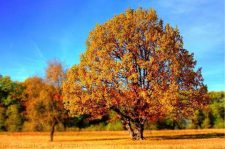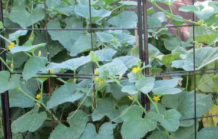Most years, Spring signals the start of a colorful garden and a host of blooming flowers.
Yet, at this point in the season minimal care is needed for spring-flowering bulbs, Kansas State University horticulture expert Cynthia Domenghini said. To enjoy blooms in April, Domenghini suggests following simple care tips to ensure roots are taking in the nutrition to support future growth.
Roses
Before new leaf buds open (bud break), roses should be fertilized and pruned.
“April is a great time to plant new roses in the landscape as well,” Domenghini said. “Specific maintenance practices vary based on the classification, or type, of rose.”
Domenghini recommends tips from the Growing Roses publication, available from the K-State Research and Extension bookstore.
Easter Lilies
Containerized lilies are common in the spring as they are used to celebrate the Easter holiday.
“This perennial bulb can be grown in the landscape to enjoy for years to come,” Domenghini said.
The Easter Lily Fact Sheet provides care instructions.
Henbit and Chickweed
Henbit weed is in bloom, creating waves of purple through the landscape.
“Weeds drive most gardeners crazy, but many weeds provide food for pollinators,” Domenghini said. “Henbit is one of the first sources of pollen and nectar for honey bees and bumble bees after the long winter.”
Henbit and chickweed are winter annuals that germinate in the fall but become more noticeable in the spring, Domenghini added. Treating these weeds is best done by applying a pre-emergent in the fall.
“Controlling for these weeds this time of year is much less effective,” Domenghini said.
Manual removal is recommended if the plants can’t be tolerated in the landscape.
The henbit and chickweed fact sheet provides tips for prevention and management in the spring.
Grassy Sandbur
Another annual — grassy sandbur — is a grassy weed commonly found in lawns, and spreads profusely as the stickers produced attach to clothing and pets.
“Maintaining a dense lawn is the best defense against this weed,” Domenghini said.
Alternative solutions can be found in the Grassy Sandbur fact sheet.
Domenghini and her colleagues in K-State’s Department of Horticulture and Natural Resources produce a weekly Horticulture Newsletter with tips for maintaining home landscapes and gardens. The newsletter is available to view online or can be delivered by email each week.
Interested persons can also send their garden and yard-related questions to Domenghini at cdom@ksu.edu, or contact your local K-State Research and Extension office.




